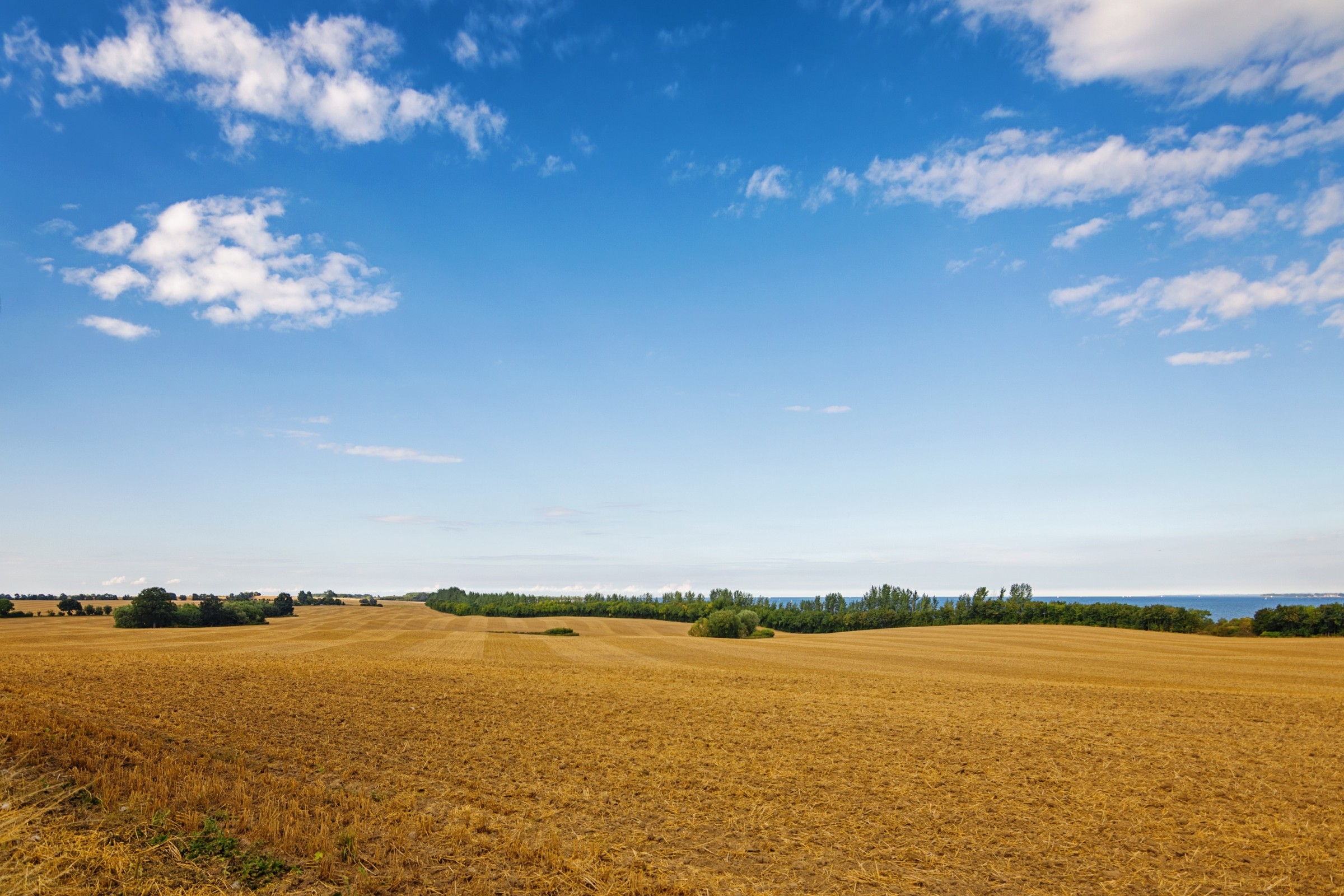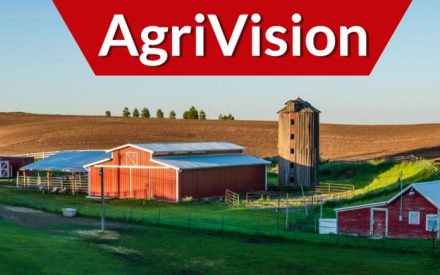Host Katie Wantoch and Ryan Sterry, Professor and Agriculture Agent with Extension in St. Croix County, discuss the pro’s and con’s of harvesting, storing, and feeding high-moisture corn to dairy cattle.
View Transcript
This is UW Extension’s Farm Management AgriVision Podcast. I am Katie Wantoch Agriculture agent with the UW-Madison Division of Extension. I’ll be chatting with fellow Extension educators as we answer questions from farmers and share our knowledge and expertise on how you can improve your farm management skills. Today I am joined by Ryan Sterry, professor and Agriculture agent with Extension in St. Croix County. Welcome Ryan to the podcast.
Ryan Sterry
Thank you, Katie.
Katie Wantoch
Ryan, today’s question is from a son and his father, who farmed 425 acres and milk 110 Holstein cows. With a 26,000 pound herd average, they managed to finish combining their corn by November 15 this year, but report it was a major challenge. Where their farm is located the last two years have been wet. They’re wondering if it would be a good idea to buy a used harvester to put up their corn in for next year. That way they could combine in a month earlier and store and feed high moisture corn. Instead of hauling their corn to town and paying for it to be dried and stored at the mill. They think that it probably wouldn’t take long for it to pay for itself. Ryan, what are your thoughts on this?
Ryan Sterry
This is a good question. And there’s a few different angles I think you could look at this from. On the pro side, putting up high moisture corn, it is going to spread out your harvest time and give you an earlier start than what you may have now to spread out your equipment use and labor and those things. Additionally, not having corn to dry down might save you some drying costs as well, especially in a wet year. As the question alludes to that this farms run into recently. High moisture corn may also provide more flexibility and selecting hybrids where you can select that longer day hybrid and not have quite as much stress that it’s not going to dry down in the field and give you some harvest challenges. That said high moisture corn has its disadvantages as well, you’re going to lose flexibility in marketing. Since you can sell that grain as dry corn now it’s going to be put up at high moisture. And your question also gets to the added cost. It’s going to take a special storage structure, special handling to process that corn as well. Also remember to factor in the equipment and time needed. So putting up high moisture corn at the recommended moisture level cannot be under emphasized. Because high moisture corn can be a little more susceptible to spoilage and storage losses. So in general terms for looking at 28 to 32% moisture in a bag, or 26 to 28% in a silo, you might be able to go to a point or two different areas of bare minimum. But those are the general ranges we want you to be thinking about. So in a wet year, let it get to that before we get your harvest started. Everyone once in a while we do have falls where the crop dries down quite rapidly. If it gets too dry on you don’t try and put up as high moisture in between if you get to 20% moisture for example, then just accept you’re gonna have to put up dry corn that year. Also consider using an inoculant to improve the aerobic stability of high moisture corn.
Katie Wantoch
And Ryan, when you talk about an inoculant, how is that added and what is the real benefit of doing that, that aerobics stability you’re talking about?
Ryan Sterry
So since high moisture corn can be a little more challenging terms of preventing spoilage it’s similar to how we would recommend inoculants for corn silage, just to help preserve it a little bit better and storage and also help it when you feed out that it’s not going to heat quite as fast when it’s already mixed in in the feed bunk. So there are specific inoculants we won’t get into that today to look at but it’s not that much of a different approach is what we use for corn silage.
Katie Wantoch
Sure, and when you’re feeding high moisture corn Ryan, it feeds a little differently than corn silage. Correct?
Ryan Sterry
Correct. Especially it feeds a little differently than dry corn. Because high moisture corn is fermented. It can digest more rapidly in the rumen, which is both a pro and a con. On the pro side that increased digestibility can, in a lot of cases it does improve milk production. So there might be an added benefit there as well in cow performance. The caution though, is because it’s more rapidly digested. If we don’t have proper TMR management, proper bunk management, we do run the risk of leading to acidosis and some cow health problems. One of the first things you might see is a situation like that as you start to see the fat test go down as well as we’re starting to get into that acidosis territory. So it cuts both ways. When done right. It’s a good thing, but it does take a little higher level of management to do it.
Katie Wantoch
Really that negative experience of impact to the cow herd does have a cost associated with it if you’re not managing that feed properly.
Ryan Sterry
Right. It’s also a little bit of a management change as well. So yeah, sounds to me, you don’t want to get into long term acidosis trouble, where you’re doing some long term damage to cows and those things. So like I said, it kind of cuts both ways that in when properly managed, you do, can get a production benefit as well. But where, you know, we’re having trouble with the bunk, we may not have it balanced, right in the TMR, it’s a higher risk thing too. So just bear that in mind that work really closely with your nutritionist to balance the ration making this change and all those good things.
Katie Wantoch
Getting back to the farmer’s question here, he’s talking about buying, purchasing a used harvester to put up or an upright silo. What are your thoughts on the different structures that are available for high moisture corn storage?
Ryan Sterry
So in general, high moisture corn can be put up in upright silo, it can be put up in a bag, it can be put up in a bunker. Decision to do that, a lot of times it’s herd size, can you feed out of whatever structure you choose fast enough to keep the feed fresh, don’t allow spoilage at face where you’re removing feed those things. Most generally, if we’re talking upright silo or talking oxygen limiting type structure in an upright, but really work again, with a nutritionist for how much you might be able to feed in your ration, to know how much that removal rate is going to be and let that help guide the decision on what structure is best for you. It’s hard for me to give you a blanket recommendation how many pounds of high moisture corn you can feed because it does depend some on the rest of the ration. Some farmers might still feed some dry corn along with high moisture corn depends on the level of corn silage you’re feeding. If you’re not feeding much, or if you’re feeding a lot that’s going to impact can you go on the high end or low end of the range of what’s acceptable for feeding high moisture corn as well. And that’s one of the things thinking about this question. You know, some farms might choose to try a bag instead, first year just to see. Do we like feeding this? Is it a fit for harvest system? Bag might have a higher annual cost, but allows you to try this before making a large long term investment in putting a silo up. The same you know, depending on herd size, I know some smaller herds much smaller than what we’re talking about here. They might put up high moisture corn just for the winter months. Colder weather, don’t have to feed out quite as fast. They can keep up with it. And they just don’t risk it in hotter weather where you’re worried about spoilage. Can we feed it fast enough? But we only have so many cows. So that’s another option too. So there’s more than one way of going about this.
Katie Wantoch
Right, definitely. And they can certainly reach out to you as you transition into a dairy educator role here with us in Extension as well as their dairy nutritionist to really get that input as to balancing their ration as they’re feeding out to their cows and what storage system. As well as the size of the storage system too, like you mentioned works best for their farm operation. Any other thoughts, Ryan?
Ryan Sterry
No, but I think that’s a good question and gives you a lot to think about.
Katie Wantoch
Great. Well, thanks so much for your time today, Ryan.
Ryan Sterry
Thank you, Katie.
Katie Wantoch
For more Extension Agrivision podcasts or resources to improve your farm management skills, check out farms.extension.wisc.edu. Thanks for listening.
Related Resources
Information in this article was originally published as part of the Agrivision column in Wisconsin Agriculturist.
Extension resources


 AgriVision Episode 26 - Time to sell the cows?
AgriVision Episode 26 - Time to sell the cows?


